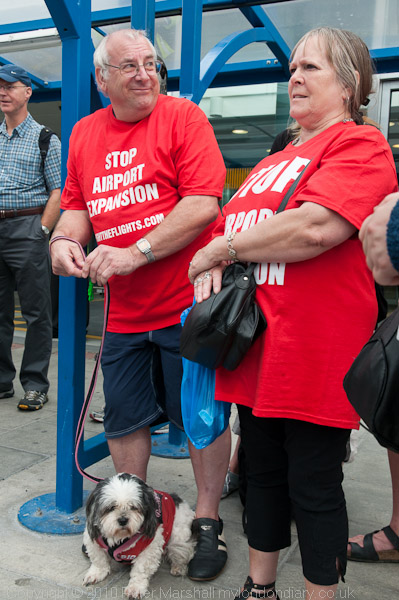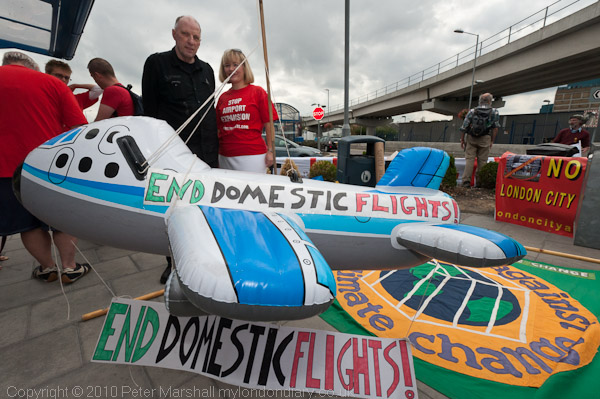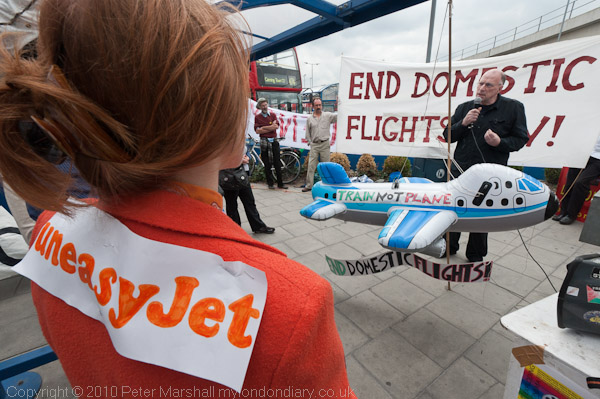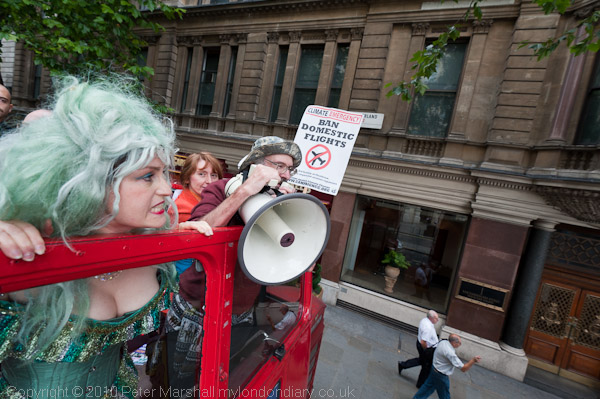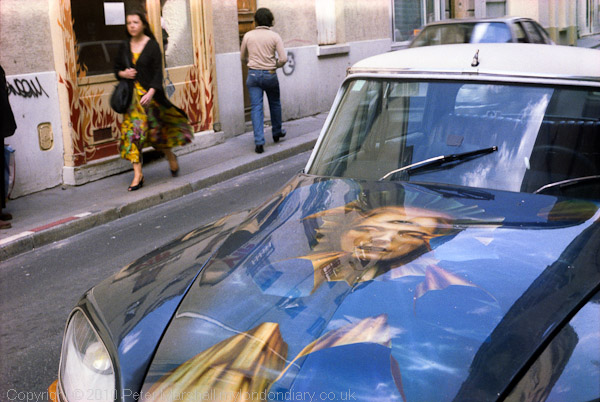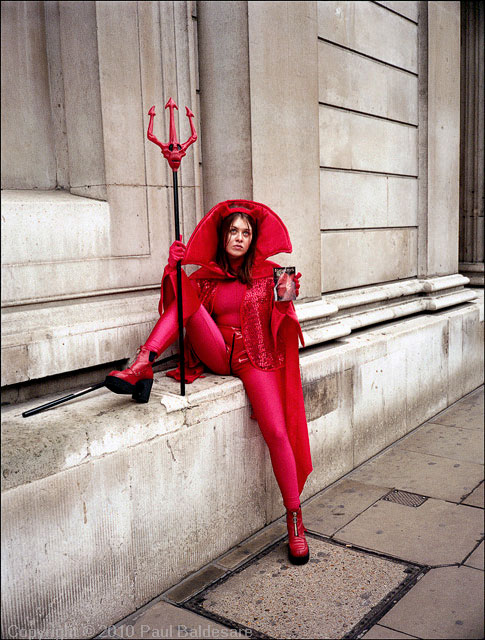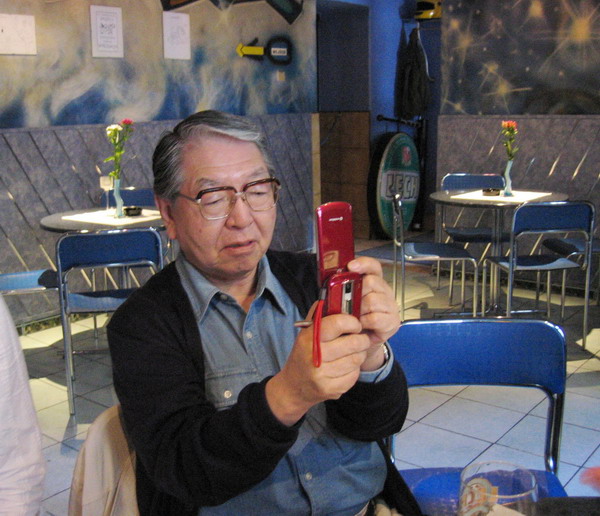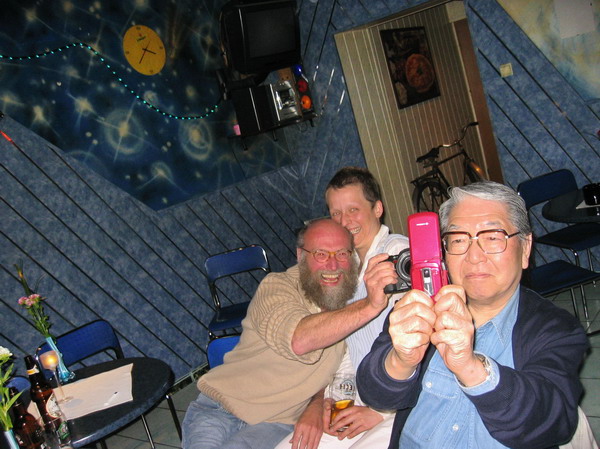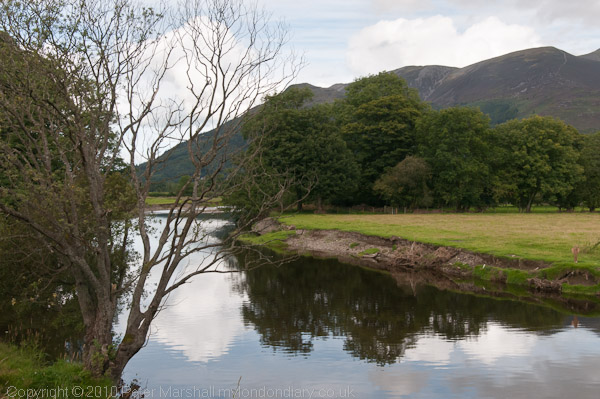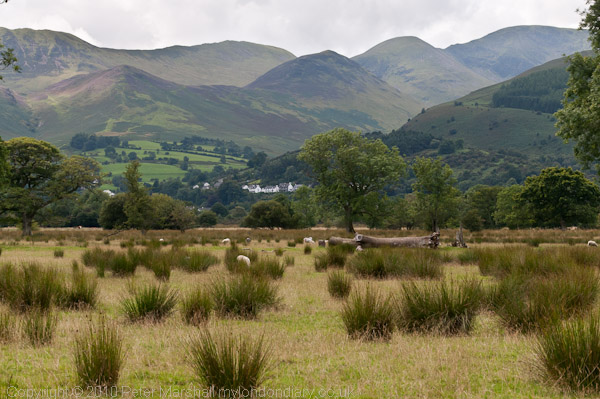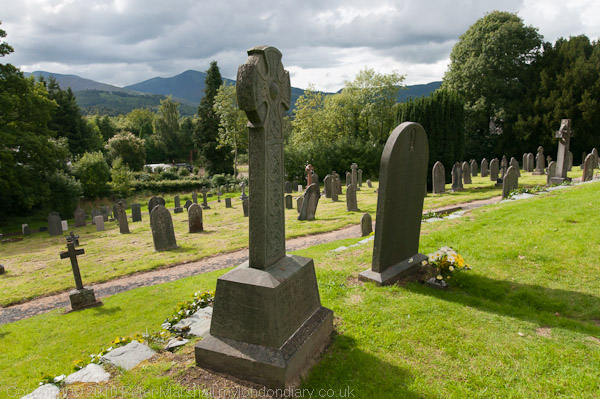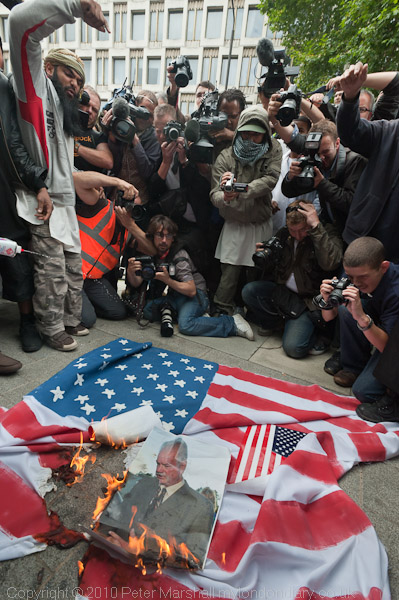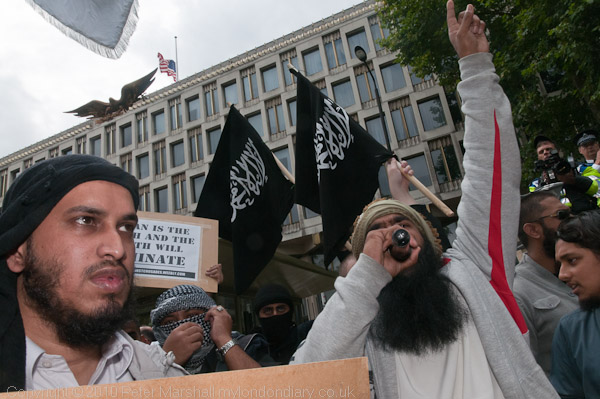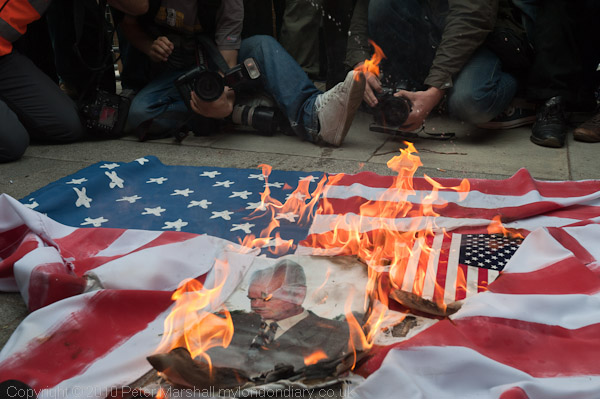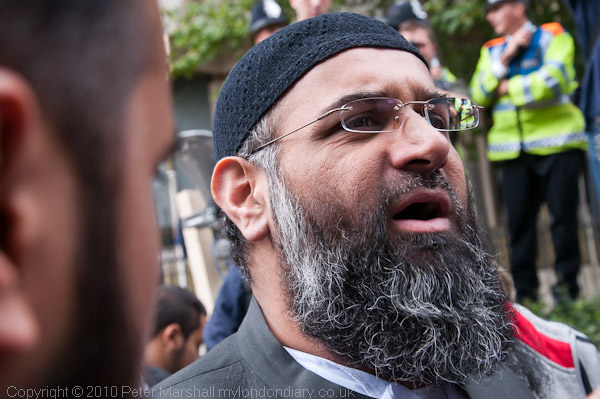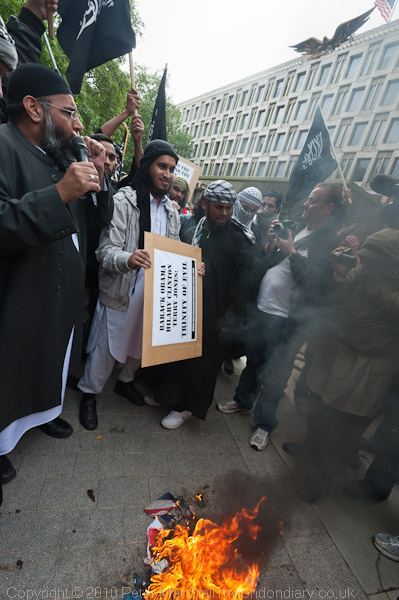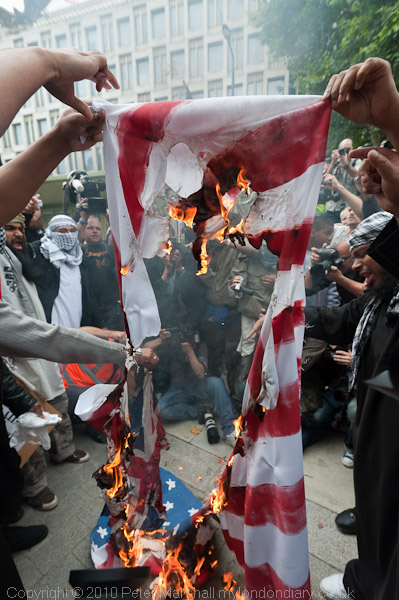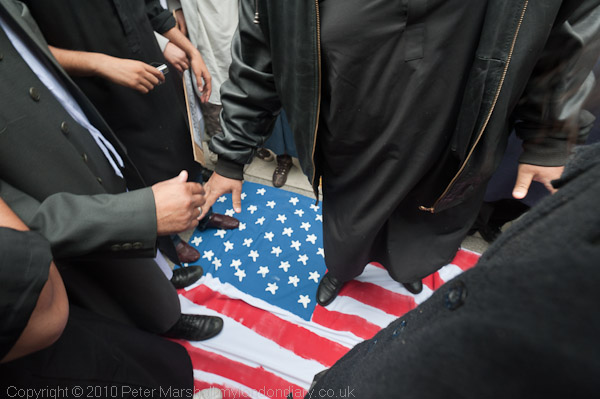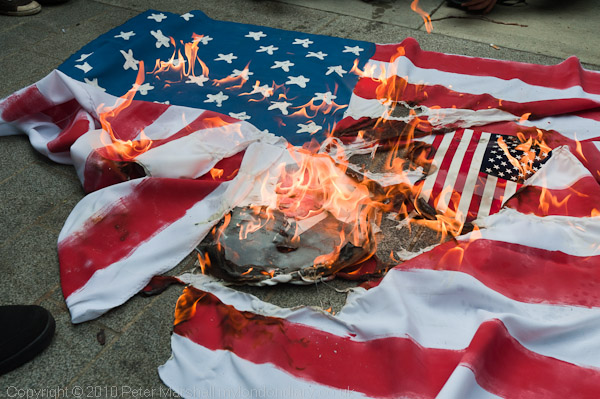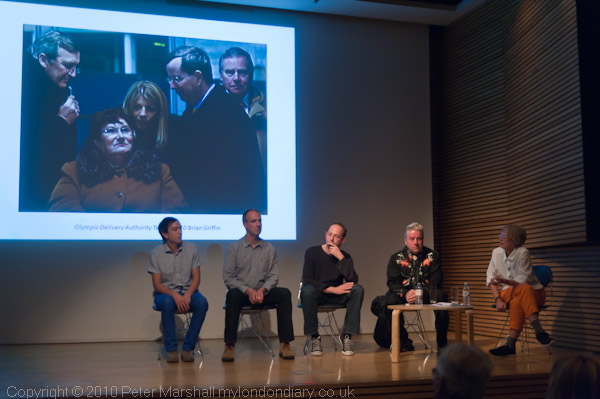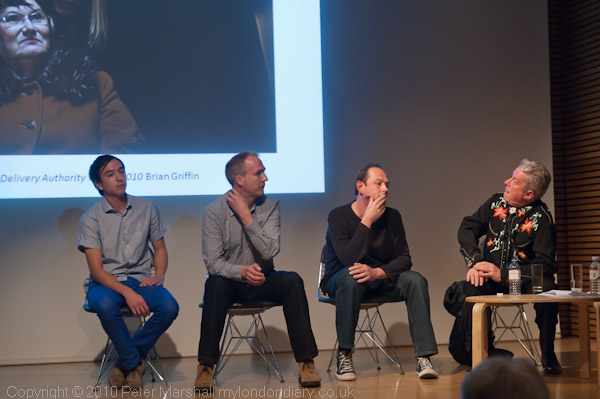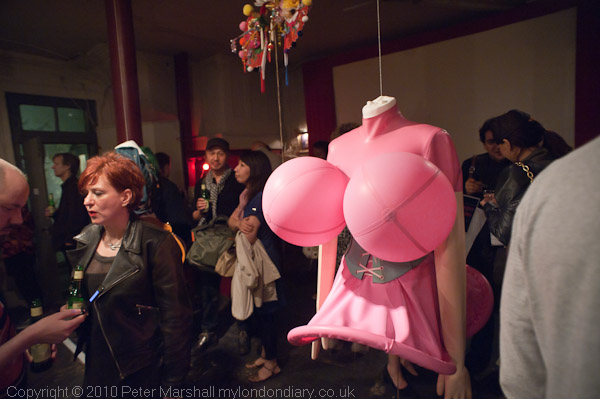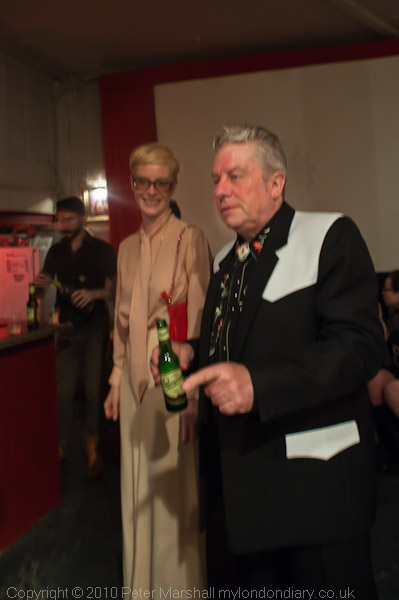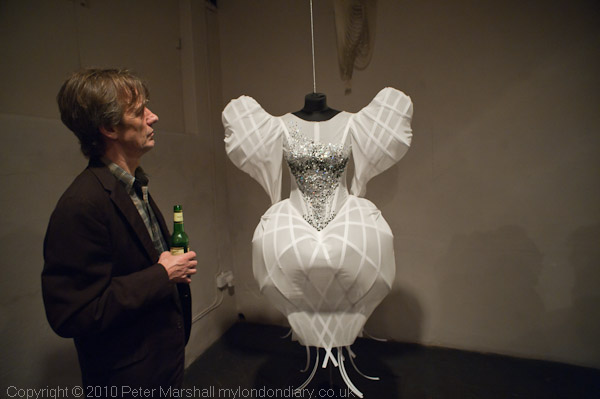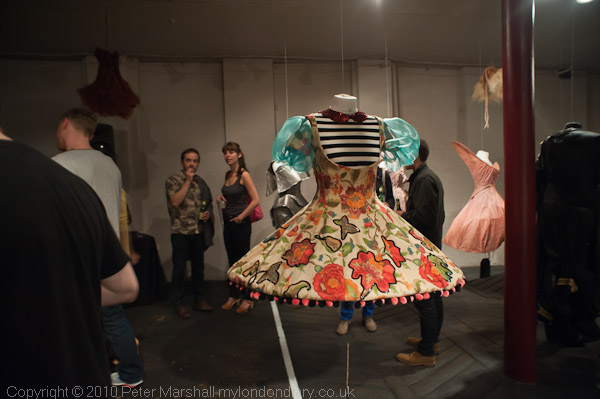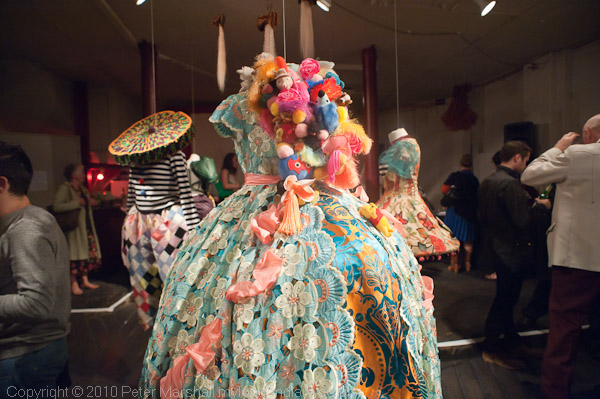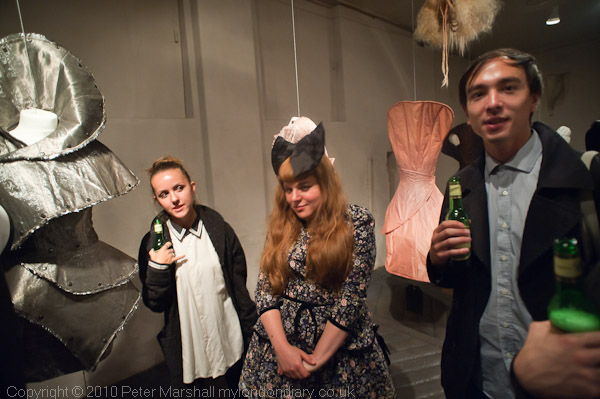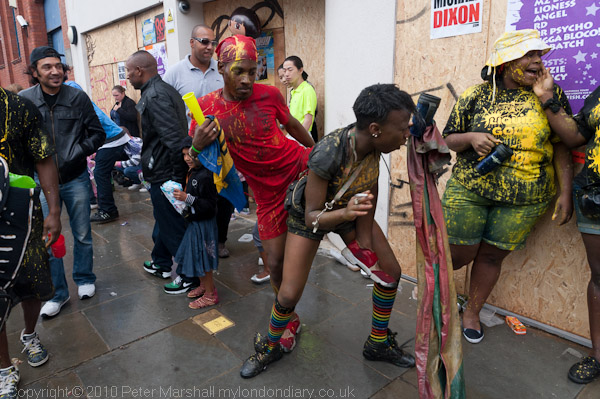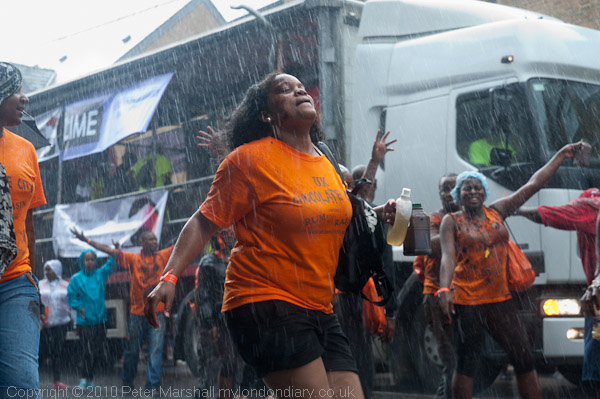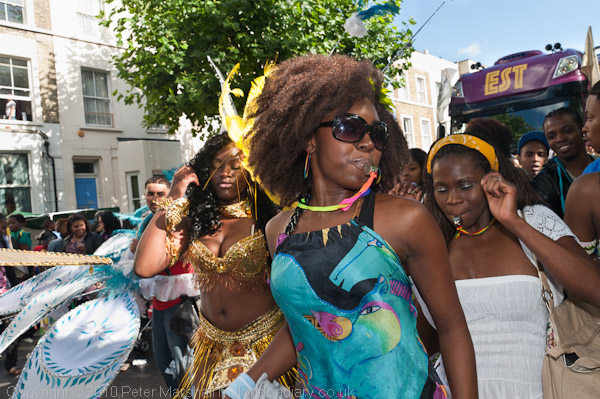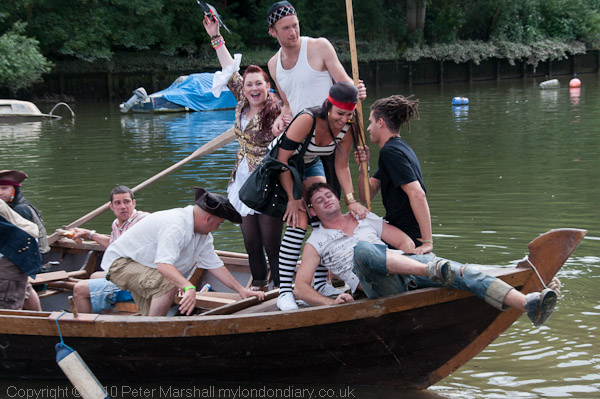The English Defence League (EDL) complain that they get unfair treatment from the media who often depict them as a racist and fascist mob. I’ve tried to report them accurately and present a slightly more nuanced view, but at times they don’t make it easy.
Although some of the leaders of the EDL try to avoid racism and extremism, clearly they are unable to control the more extreme of their supporters, some of whom have been or are members of racist and fascist organisations and others clearly hooligans.
The EDL is one of a number of allied movements that bring together disaffected elements from a largely white working class who feel alienated from the political parties and government and neglected by them (don’t we all.) Where in the 1930s this might have taken them to the left (though Mosley too had his supporters) the left now seems to have lost the ability to make links with ordinary working people.
During the Al Quds Day march, many of the EDL supporters were chanting obscenely Islamophobic slogans and singing Islamophobic songs which make a nonsense of their claims not to be against Muslims in general but only against extremism.
A couple of days before the march a ridiculous ‘fatwa‘ had appeared on one of their web sites attacking the press and promising violence against them. And during the event in Grosvenor Square a number of them came and made threats against some of the press who were photographing them from the other side of a police line. Neither or which is likely to endear them to reporters and photographers.
During the march in Park Lane, a full but open beer can was thrown by one of the EDL demonstrators, landing on the roadway a few feet in front of me and bouncing on to miss me by inches, going between me and another photographer a couple of feet away and then hitting a woman on the march, though fortunately by this time it had lost most of its force after a couple of bounces, and she was not hurt. It seemed most likely it was aimed at the press (and me in particular) and could well have caused serious injury.
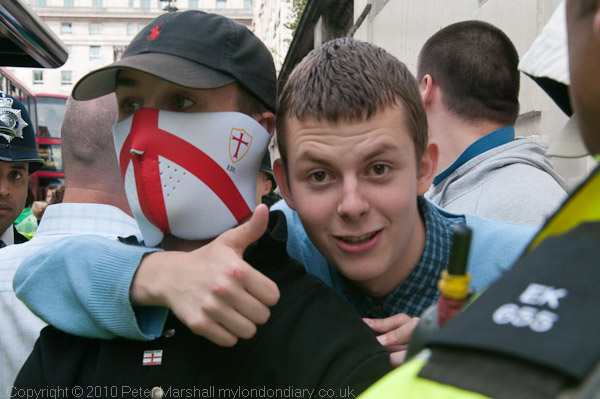
Police hold a small group of EDL supporters away from the march
Earlier I had photographed a small group of EDL supporters being held by police behind a bus shelter and being prevented from demonstrating against the Al Quds Day march. I did feel it was an unnecessary restriction on the right to demonstrate, though the police did I think allow them later to make their way down to an area the police had designated for the counter-demonstrators.
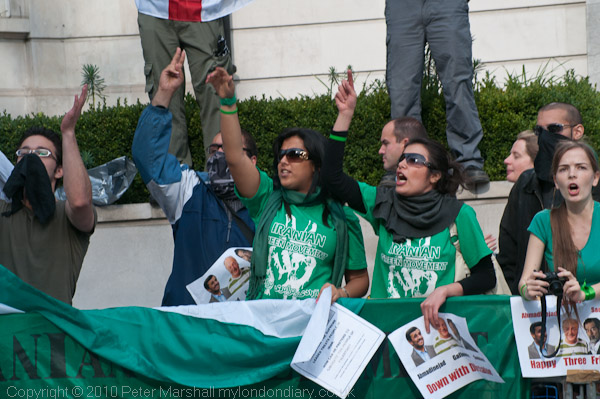
The march turned round just before the Hilton Hotel on Park Lane, and the police had made a pen for them at this point. Part of this was occupied by around 20 members of the democratic opposition in Iran, the Iranian Green Movement, whose poster ‘Down with Dictator‘ linked Ahmadinejad, Galloway and Saddam.
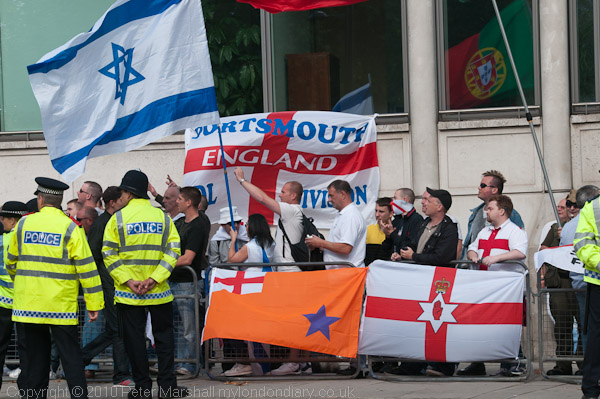
Next to them was a larger group of perhaps 80 people behind a number of EDL-related flags and banners. As well as various versions of the St George English flag, there were also Union Jacks, an Ulster Flag and an Orange Order Flag along with an Israeli and Portuguese flags. The only banners I could read read ‘Jerusalem will never be Pisslamic‘ and ‘Al Quds = Nazi Terrorists – Get Out of UK‘
I tried to walk across and photograph the counter demonstrators but was prevented from doing so, first by an EDL steward, and then by police. So all my pictures at this point were taken from the other side of the wide road – with focal lengths up to 300 mm. The EDL had made it clear to the police that they didn’t want the press near them and had threatened that they might be attacked if they came closer. I feel the police should have told them that the press had a right to report and that the police would make sure they were able to do so rather than go along with the threat of violence.
Later in Grosvenor Square we did get near the EDL demonstrators – separated only by a single line of police – and there were a number of threats made towards particular photographers by EDL supporters – as well as a few more friendly approaches. And, after a while some of the EDL did perform for the cameras – and said “There, you’ve got your pictures.” Yes, we had – but don’t blame us for the behaviour of the EDL.
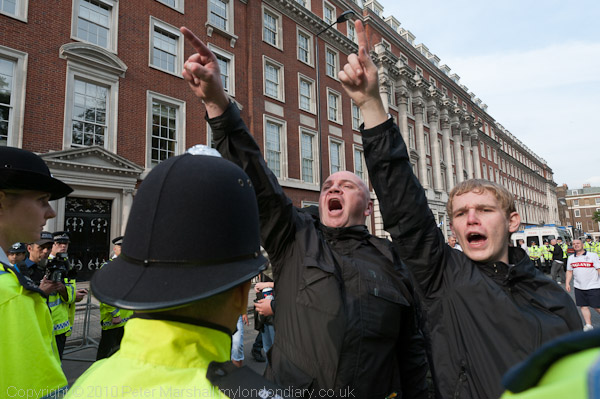
As I wrote in my report of the event (which you can read on My London Diary, along with more pictures):
It is really very simple: if any group wants to get fair treatment by the press, all they need to do is to behave in a reasonable manner. Photographers in particular don’t make things up, but photograph what is there.
